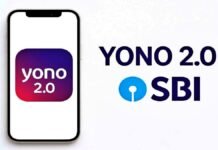
Hindi today is a versatile, technology-ready language powering governance, justice, education, digital platforms, consumer tech, and scientific work not just poetry and literature. Its modern development is driven by public policy, AI translation infrastructure, Unicode standardization, and a booming vernacular internet ecosystem that increasingly prefers content in Hindi and other Indic languages.
Policy and governance
Modern Hindi’s official use is anchored in the Official Languages Act, 1963, which defines where Hindi may be used for Union purposes alongside English, shaping bilingual administration at the national level. The Department of Official Language implements constitutional and statutory provisions and coordinates Hindi’s growth in government work through policies, rules, and monitoring mechanisms. Together, these measures have institutionalized Hindi beyond literature, embedding it in everyday administrative communication and service delivery.
Justice and legal access
The Supreme Court has operationalized large-scale translations of reportable judgments into Hindi and other Indian languages via the e‑SCR portal, using AI-assisted processes in collaboration with High Courts. As of March 28, 2025, 36,344 Supreme Court judgments had been translated into Hindi and uploaded to e‑SCR, with tens of thousands more in other Indian languages to improve public access to law. This effort builds on SUVAS an AI-assisted legal translation tool developed with MeitY support to translate judicial documents between English and multiple Indian languages, including Hindi.
Education and exams
NEP 2020 emphasizes the home language or regional language as the preferred medium of instruction at least until Grade 5 and ideally to Grade 8 and beyond, strengthening Hindi’s role wherever it is the local language. In national entrance testing, NEET is conducted in 13 languages including Hindi, reflecting the policy shift toward wider language access in competitive examinations. This institutional backing moves Hindi from classroom literature to a functional medium across curricula, testing, and academic pathways.
Technology and AI infrastructure
BHASHINI, the National Language Translation Mission under MeitY, provides AI/NLP infrastructure and public APIs to break language barriers and enable digital services in Indian languages, including Hindi. Its real-world deployments include multilingual access at mass events and government platforms, demonstrating how AI translation makes governance and services more inclusive. Expanding integrations across ministries and local bodies signal Hindi’s deepening presence in e-governance and citizen interfaces.
Digital economy and internet
Indic-language use now defines India’s internet: 98% of users accessed Indic content in 2024, and the country is on track to exceed 900 million internet users by 2025, with rural India leading growth. Urban users also prefer regional-language content, underlining the demand for localized experiences and fueling Hindi’s expansion across apps, OTT, news, and social platforms. This vernacular boom is reshaping product strategy for businesses and startups, pushing Hindi-first or Hindi-inclusive design across the digital economy.
Consumer tech and voice interfaces
Google Assistant supports full interaction in Hindi on phones and smart speakers, normalizing voice-first access for information, media, and smart-home control in the language. The broader market trend shows Hindi emerging among the most-used assistant languages globally, with Alexa adding Hindi support in India to meet vernacular demand. Voice technologies thus place Hindi at the center of hands-free computing and everyday digital tasks.
Scientific and technical lexicon
The Commission for Scientific and Technical Terminology (CSTT), established in 1961, standardizes and defines scientific and technical terms in Hindi and other Indian languages, supporting higher education, research, and specialized communication. CSTT’s multilingual technical terms portal and regular dictionaries/terminologies enable adoption of Hindi in professional and STEM contexts. This corpus development ensures that Hindi remains precise and usable in cutting-edge fields, not merely in literary domains.
Standards and computing support
Devanagari the script used for Hindi has long been part of the Unicode Standard (U+0900–U+097F), ensuring consistent rendering, searchability, and interoperability across operating systems, apps, and the web. This universal encoding enables high-quality fonts, input methods, and data exchange, laying the technical foundation for Hindi’s modern digital use. Standardized encoding is why Hindi can scale reliably from mobile UIs to databases and AI pipelines.
Business, media, and civic communication
Widespread adoption of AI translation and language tech through initiatives such as BHASHINI has catalyzed Hindi usage across ministries, events, e‑commerce networks, and partner ecosystems. Ecosystem collaborations span public communication and digital commerce, with platforms tapping Bhashini’s models to serve users natively in Hindi and other Indian languages. As enterprises align with vernacular internet trends, Hindi’s role in marketing, customer support, and product UX continues to accelerate.
The modern trajectory
From official policy and courts to classrooms, smartphones, and AI, modern Hindi is a working language of governance, justice, science, and commerce, not just a literary tradition. Public infrastructure like BHASHINI, judiciary translation programs, Unicode standardization, and a vast Indic internet have made Hindi integral to how Indians learn, transact, and participate in the digital public sphere. As demand for local-language experiences grows, the next wave of innovation will continue to position Hindi at the heart of India’s digital and institutional life.














































